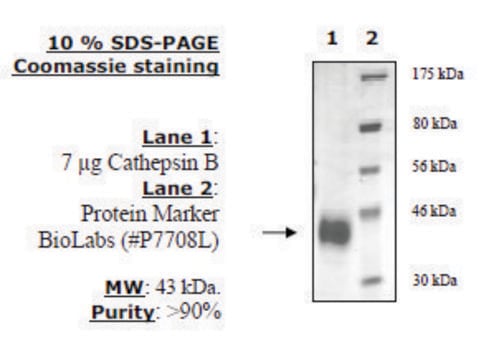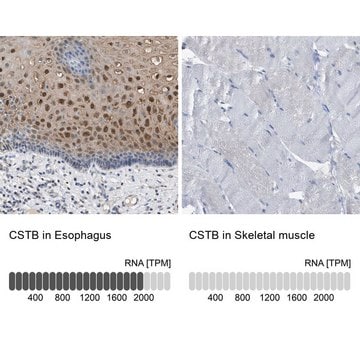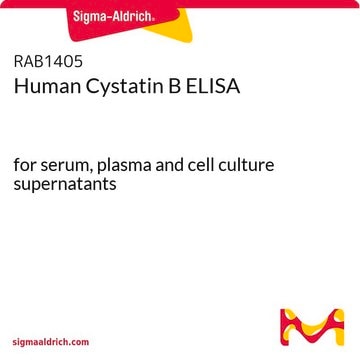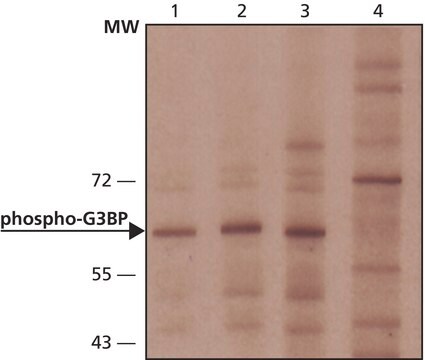C4249
Cystatin B human
recombinant, expressed in E. coli, solid, ≥95% (SDS-PAGE)
Synonyme(s) :
CPI-B, CST6, CSTB, EPM1, Liver Thiol Proteinase Inhibitor, PME, STFB, Stefin B
About This Item
Produits recommandés
product name
Cystatin B human, recombinant, expressed in E. coli
Produit recombinant
expressed in E. coli
Niveau de qualité
Description
contains a N-terminal 7X His-tag
Pureté
≥95% (SDS-PAGE)
Forme
solid
Poids mol.
apparent mol wt ~13 kDa by SDS-PAGE (reducing)
Numéro d'accès NCBI
Température de stockage
−20°C
Informations sur le gène
human ... CSTB(1476)
Description générale
Application
Actions biochimiques/physiologiques
Reconstitution
Code de la classe de stockage
11 - Combustible Solids
Classe de danger pour l'eau (WGK)
WGK 3
Point d'éclair (°F)
Not applicable
Point d'éclair (°C)
Not applicable
Certificats d'analyse (COA)
Recherchez un Certificats d'analyse (COA) en saisissant le numéro de lot du produit. Les numéros de lot figurent sur l'étiquette du produit après les mots "Lot" ou "Batch".
Déjà en possession de ce produit ?
Retrouvez la documentation relative aux produits que vous avez récemment achetés dans la Bibliothèque de documents.
Notre équipe de scientifiques dispose d'une expérience dans tous les secteurs de la recherche, notamment en sciences de la vie, science des matériaux, synthèse chimique, chromatographie, analyse et dans de nombreux autres domaines..
Contacter notre Service technique







